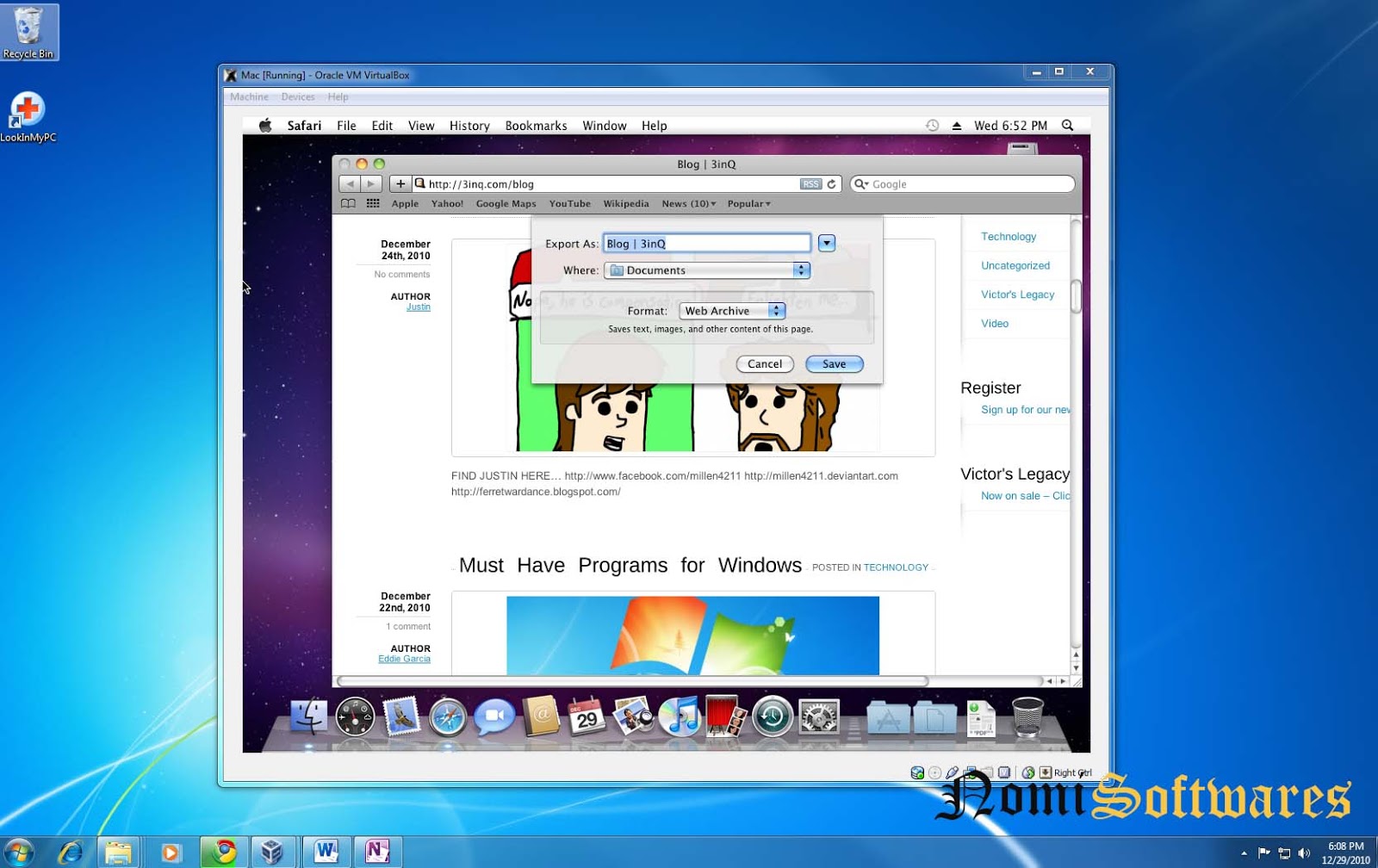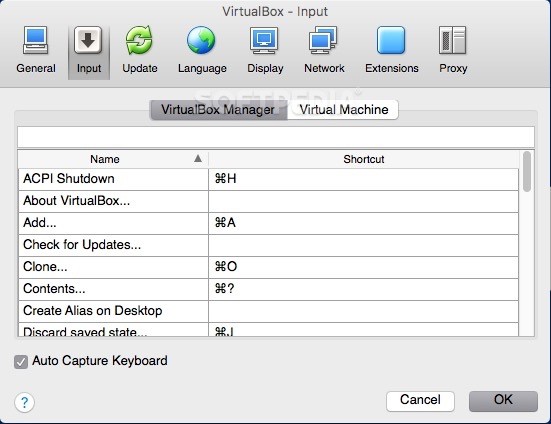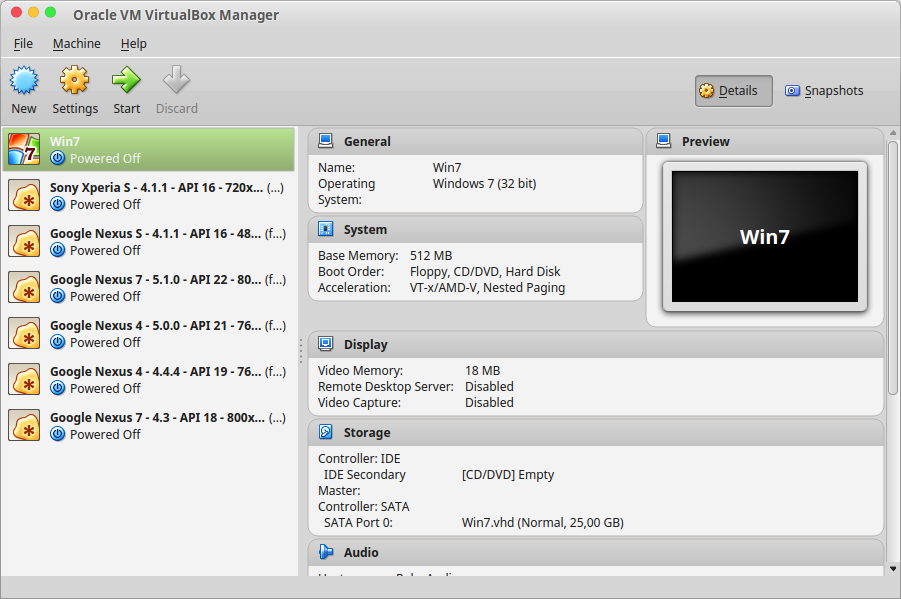
- ORACLE VM VIRTUALBOX FOR MAC MAC OS X
- ORACLE VM VIRTUALBOX FOR MAC PC
- ORACLE VM VIRTUALBOX FOR MAC LICENSE
- ORACLE VM VIRTUALBOX FOR MAC WINDOWS 8
ORACLE VM VIRTUALBOX FOR MAC PC
On the PC, VMware Workstation is clearly a superior product, but in many ways you get what you pay for: The performance differential between VMware Workstation and Virtualbox on the PC - again, when running office applications and light-duty computing tasks - wasn’t overly significant. VirtualBox struggles to run more graphically intensive games and applications that require advanced 3D graphics support, so Mac users interested in those products should opt for Parallels or VMware’s solutions. I’ve used (and tested) both VMware Fusion and Parallels Desktop on the Mac several times (see here and here), and Oracle VM VirtualBox comes close to the performance that these products offer in the Mac environment, at least when it comes to traditional desktop applications, light web browsing, text editing and the like. VirtualBox on the PC was noticeably faster, but that can easily be attributed to the extra RAM, faster Intel processor speed, and more robust hardware of my desktop PC. In all cases the creation of VMs was painless process, and I was up and running with VMs in no time.
ORACLE VM VIRTUALBOX FOR MAC WINDOWS 8
I tested both the OS X and Windows versions of Oracle VM VirtualBox by creating and running a variety of VMs, including testing with Windows 8 and Ubuntu Linux 12.10. That said, it does provide a host of more advanced features, such as VM backup and snapshotting options that are usable and effective, but generally lack the depth of features found in commercial products.


VirtualBox does have some annoying limitations, such as lack of USB 2.0 support. Technically savvy users will blow through this section in minutes, while less technically inclined users may opt for the more polished tutorials offered in VMware Workstation or Parallels Desktop.Ĭreating a VM using the OS X version of VirtualBox The creation of virtual machines is facilitated by a step-by-step configuration process where VirtualBox prompts you for all the important details of your new VM, such as its name, type of OS, amount of RAM you’d like to allocate, which storage you’d like to us for the VM, how virtual CPUs and cores you’d like to use, etc. The PC version was installed on an HP Phoenix HP9E with 12GB RAM, a 3.5GHz Intel Core i& processor, 2TB hard drive, and an nVidia GeForce GTX 550 Ti discrete graphics card with 1GB video RAM. I installed the OS X versions on a MacBook Air with a 2GHz Intel Core i7 processor, 8GB of 1600 MHz DDR3 RAM, a 256GB SSD drive, and Intel HD4000 integrated graphics.
ORACLE VM VIRTUALBOX FOR MAC MAC OS X
I downloaded and installed VirtualBox 4.2.4 in both Mac OS X and Windows versions, and getting up and running with both versions only took a few minutes.

Installation is a straightforward process. Let’s take a look at what this latest version of VirtualBox has to offer. VirtualBox version 4.0 was the most significant release in the last year or so, but 4.2.4 brings a host of new features, bug fixes, and other improvements.

So how does the latest version of VirtualBox stack up as a virtualization platform? To find out I decided to spend a few weeks using Oracle VM VirtualBox 4.2.4, released on Oct.
ORACLE VM VIRTUALBOX FOR MAC LICENSE
(See more details in this Oracle VM VirtualBox commercial license blog post.) Companies and other institutions looking for a licensed version of Oracle VM VirtualBox with technical support can opt for a paid version. One of the best alternatives to all of the products I just mentioned is Oracle VM VirtualBox, an open source and free (at least for personal and home use) virtualization product that allows you to create and manage VMs. All of these products do an excellent job of running VMs and quickly spooling up work environments of all sorts of operating systems, but with both personal and IT budgets tighter than ever, isn’t there a cheaper solution? Let’s take a look. If you’re looking to quickly create a virtual machine with a different OS than your existing PC or server, you’ll likely turn to products like Parallels Workstation, Parallels Desktop (Mac), VMware Workstation, or VMware Fusion (for the Mac).


 0 kommentar(er)
0 kommentar(er)
